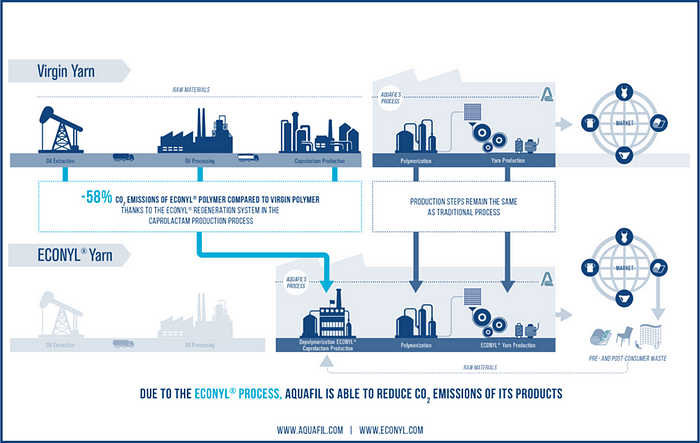5 Principles of Sustainable Interior Design

Society is becoming increasingly aware of the importance of environmentally responsible building and interior design. As a result, more and more clients seek to incorporate sustainability principles in their interiors. Interior designers have a tremendous impact on the sustainability of an environment because they are the ones deciding which materials and products will be used and how ecologically people will be able to interact with their surrounding spaces.
By following these sustainable interior design principles, designers reduce the negative environmental impact of our society and build a better, more sustainable future.
1. Design for energy efficiency
Energy consumption is one of the major contributors to climate change. Buildings are responsible for a big share of the world’s greenhouse gas emissions, caused by energy consumption. Architects and interior designers can do a lot to improve a building’s energy efficiency, mainly by reducing the amount of energy needed for heating, lighting, running appliances, etc., and by providing renewable, non-carbon-based energy to the building.
Heating and lighting are the two most crucial factors interior designers have influence over. Since most of the building’s heat escapes through windows, it’s important that the installed windows are of high quality and provide good insulation. Curtains and drapes keep both cold air and the sun’s heat outside. Window coverings, blinds and shades enable residents to control the building’s temperature in an energy efficient way by opening and shutting them as needed.
Carpets are excellent thermal insulators; according to estimations, a carpet retains as much as 10 % of a room’s heat.

To save energy spent on lighting, a lot can be done just by picking the right colors. Lighter colors reflect more light, while rooms with darker walls and furnishing need more artificial lighting. Using reflective surfaces increases the amount of light in a room by bouncing it around, decreasing dependency on artificial lighting.
Installing home automation and so called ‘’green gadgets’’ makes it possible to control heating and lighting systems remotely. This also help residents and occupants use the building’s energy more efficiently and economically.
2. Design for low environmental impact
From a sustainability perspective, it’s very important to pick materials and products with the lowest environmental impact. Organic materials (e.g. wood, wool, natural stone) seem the obvious choice, but we mustn’t forget that natural resources need to be treated responsibly. Choose materials that are quickly renewable (such as fast-growing bamboo), and are extracted in an environmentally responsible way. There are labels, standards and certifications that give credible information about the products’ origin and help you identify eco-friendly products. For example, an FSC label on wood products ensures that the wood used in the product was harvested sustainably.
The environmental impact of materials and products must be evaluated throughout their entire life cycle — from extraction, production, transportation and processing, all the way to how they are discarded after use. There are standardized tools and labels that help designers understand, compare and evaluate a product’s environmental impact in distinct phases of their life cycle, such as the LCA (Life Cycle Assessment).

3. Design for waste reduction
Interior designers have a lot of power in their hands when it comes to waste reduction, and at the same time, a big responsibility to act sustainably. The planet’s precious resources are limited, so the mentality of discarding products as soon as they go out of style and replacing them with those that are currently trendy is no longer justifiable.
Fortunately, the world of design is becoming increasingly aware of the need for sustainable thinking and is experiencing a growing interest in sustainable trends, such as recycling, upcycling and repurposing. Instead of discarding ‘’old-fashioned’’ objects while they are still functional, designers can (and should) come up with creative ways to give them a new life.
Another way in which interior designers can help reduce the depletion of natural resources (and divert waste from landfills) is by opting for synthetic materials that were made from recycled waste or can be renewed/recycled at the end of their life cycle — when they are spent or people grow tired of them.
With this cradle-to-cradle approach, waste becomes raw material for new products and a circular loop of manufacturing is formed, effectively minimizing or even eliminating waste all together.
4. Design for longevity and flexibility
To prevent materials and products getting discarded too often, interior designers should consider the lifespan of any material they plan to use, especially for those elements that experience a lot of wear and tear (such as flooring). The goal of designing for longevity is to design durable and timeless spaces and suppress the urge to change the whole design every couple of years. The best way to achieve timelessness is to choose quality over quantity, classics over trendy, and simplicity/functionality over embellishments.
Throughout the years, however, people grow and change, and they want surrounding spaces to grow with them and reflect those changes. In anticipation of that, interior designers should consider the flexibility of spaces — how well can they be adapted to fit the changing needs of people who are using them. Designing flexible spaces is one of the keys to longevity. When you can easily replace or adapt individual elements of a room, there is no need to demolish and renovate it in its entirety.
Innovation has brought many options for flexible design: walls that can be modified to create more spaces when children get bigger and need their own rooms, adjustable and mobile furniture that can be re-assembled to fit the needs of the flexible modern workplace, modular flooring that allows personalization and easy replacement of individual pieces, and so on.
Easy maintenance is an important part of designing for longevity; when spaces are hard to maintain, regular changes are inevitable and result in more resource consumption and waste creation.
The application of flexible elements in the interior makes the interior easier to maintain. With modular carpets for instance, you can replace just the worn-out pieces instead of the whole carpet, which effectively keeps waste out of landfills.
Maintenance of spaces with lots of easy-to-clean materials and surfaces requires fewer cleaning products, which are often harmful for the environment. Therefore, investing in elements that are sturdy, durable and easy to clean or replace means that less renovations will be needed; and, consequently, less waste will be generated. Saving money that would go toward cleaning and maintenance cost is an additional benefit.

5. Design for healthy environments
People spend most of their time indoors; in offices, schools, at home, etc. Although we’ve saved it for last, considering the health of an environment should be at the top of the interior designer’s priority list. There are several factors to keep in mind when trying to design healthy spaces, such as the quality of the air, heating, ventilation, lighting and acoustics.
According to the US Environmental Protection Agency, indoor air pollution is one of the five biggest environmental threats to public health. Indoor air pollution is the result of products and materials with high levels of toxic emissions. For example, furniture or equipment that has been treated with harmful chemicals releases dangerous toxins in the air. Designers should look for materials with low emissions of VOC (volatile organic compounds) and other air pollutants.
To improve indoor air quality, it’s important that the air in a room can regularly circulate and remain fresh. Plants act as natural air filters, and — contrary to common beliefs — so do carpets. Carpets improve air quality by trapping the dust particles from the air and holding them until vacuumed.
With regular, sustainable carpet cleaning, the room environment remains healthy and free of germs and allergens contained in dust particles.
Carpets are also excellent sound insulators, they help to reduce noise by absorbing sound vibrations — an important benefit to the well-being of occupants and residents.
Exposure to natural light is another beneficial aspect for both physical and psychological health. This is especially relevant for workplaces, as natural light reduces stress and increases productivity. In fact, being surrounded by elements from nature (or ones that mimic nature) has a calming effect in general. Biophilic design is a type of design that recognizes this need to include natural elements into our buildings and interiors and aims to restore the connection between humans and nature.
We hope that these principles will soon become paramount to design in general. Architects and interior designers are the creators of the spaces we live in and should always be guided by sustainable and biophilic approaches — to help take care of the environment, and simultaneously, ourselves.
Want to know more about how to include sustainable design and materials in your next design project? Download the recording of our free webinar ‘’Innovation in materials production and building construction’’.
Follow us on econyl.com, Twitter, LinkedIn, Instagram and Pinterest.
